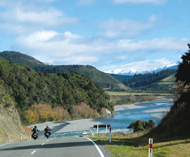
Come on, keep up!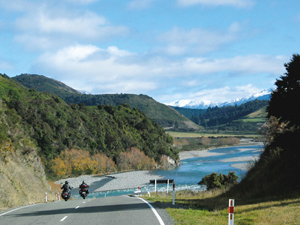
More of our favourite bike destinations for you to dream about — and to visit!
Words & photos: Everyone at ARR, and then some
In the most recent issue of ARR, we started a review of some of the bike destinations that really ring our bell. We covered mainland Australia in that story, but of course many people would say that that leaves out the best Australia has to offer … not to mention New Zealand!
We suspect that even if you live in one of the states we’re writing about you will find some place here that you haven’t visited, or that you didn’t even know about. If you know and would like to share a great motorcycle destination that we don’t cover (and there will be many), drop us a line — with a picture if possible. We will feature your suggestions at the end of this series of stories.
Tasmania
How high is up, how wide is wide and how much do we miss Oprah? [What?!? — the sub.] Tasmania is blessed not only with outstanding scenery, but also with some wonderful roads and terrific accommodation. The weather, on the other hand, can be so-so … but if it’s wet on the West Coast it’s often sunny in the east and vice versa.
Most motorcycle visitors will roll off the ferry at Devonport. The temptation then is strong to head for Hobart by way of the A3 (east coast) or A10 (west coast — sort of) before returning by the other one. And let’s face it, it is difficult to improve on that plan if you want to see as much of the once-Apple Isle as you can. The danger is that this choice will blind you to the attractions and wonderful roads that lie off this circuit.
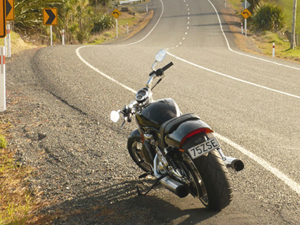
For example, you could take the B71 from Devonport to the Tamar Highway, follow that south through Launceston to Longford and then continue via Poatina to the Lake Highway and carry on south. You could even take the admittedly rather dull Midland Highway to Conara and then head for St Marys and the top of Elephant Pass — a very enjoyable bike road. You’ll also find yourself just north of Bicheno, the home of motorcycle identity Bertrand Cadart and the only (as far as I know) overtly motorcycle-friendly municipality in Australia. Drop in at his shop, Le Frog’s Corner.
Further south, the Strathgordon Road is definitely worth riding, even though it’s a dead end and there are no more facilities at its end because “The Hydro” couldn’t be bothered making them available.
You probably know about the excellent ride from Queenstown down to Strahan, but you might consider continuing north from there to Zeehan before either rejoining the A10 or continuing along a loop around Lake Pieman. Alternatively, consider the B28 or Lake Plimsoll Road, which cuts off a bit of the A10 north of Queenstown.
There are many other roads to consider — take a look at the Hema Maps Australia Motorcycle Atlas, where I’ve listed quite a few of them. Bike rental is available in Launceston or Hobart, which just means you join the circuit at another point.
What would we do: Well, something quite different. We would find ourselves somewhere to stay in Smithton or Stanley, and then we’d spend a few days exploring the many, many gravel and dirt back roads to the south and southwest. We might go as far as Corinna — it’s only about 135km south of Smithton along the Western Explorer, though it’s somewhat further if you want to come back on the tar by way of Savage River and the Murchison and Bass highways.
This is wild, lonely country, even if a lot of it has been logged or mined. I know that sounds strange, but go see it — it’s true.
Where would we put up? Well, we’ve stayed at the Bridge Hotel in Smithton, and while the rooms are nothing special, they are quite adequate. There is also motel-style accommodation, which might be more to your taste if you’re staying for more than one night. The pub is at 2 Montagu Road, Smithton — 03 6452 1389. The food is very good.
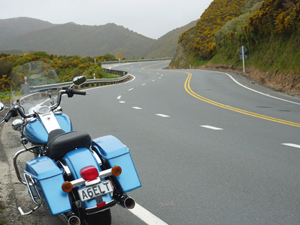
There is also Tall Timbers, out on Scotchtown Rd, Smithton — 03 6452 9000. It’s considerably more flash and used to be run by a motorcyclist. He seems to have moved on, but the positive attitude towards bikes may well have remained.
At Stanley, the Caravan Park at 1 Wharf Road – 03 6458 1266 has been recommended, but we have no personal experience of it and the recommendation is quite old. But the reader who suggested it reckoned the cabins were good and good value.
New Zealand
The Land of the Long White Cloud is so close, and so popular with Australian motorcyclists, that for many years we have simply incorporated it into our coverage — as if it actually were part of Australia. One of its attractions, though, is precisely that it is not.
The Kiwis have ways of doing things and attitudes all their own. Many of these are not exactly complimentary towards Australians, but I have never encountered any genuine hostility. Little bits of aggro do slip through, though; I once mentioned — mentioned, without complaining — the bad weather I was having on a North Island trip, and the bloke I was talking to snapped “Australia is hanging onto the High!”
Interestingly enough, Maori seem to have less of this attitude than Pakeha. Now, one of the basic courtesies when you visit another country is to come prepared with a few words of the language. “Kia ora” is “hello” (literally “be well”) and it’s “Aotearoa”, not New Zealand. The Maori language, or te reo, is not difficult and Peter Mitchell’s atlas, below, has a page of useful words.
One of the things we looked at in the first part of this story were the various ways you can get hold of a bike when you’re far from home. For New Zealand, bringing your own and renting are the two best. Both have their positive and negative sides, and I’ll refer you to that earlier story rather than listing them again. Keep in mind that you will need a Warrant of Fitness (roadworthiness certificate) if you bring your own bike.
Here’s a side note. Interestingly, New Zealand is much more relaxed about the kinds of bikes it allows to be imported. If you’re hanging out to own a bit of modern exotica, like say a Voxan, you could find just the machine you want over there. But be sure you can legally bring it back into Australia and register it here.
Anyway, let’s do what everyone else does and divide Unzud into two. The ferries that connect these two bits, by the way, come in two flavours: Interislander, www.interislander.co.nz, and Bluebridge, www.bluebridge.co.nz. They seem to be pretty much interchangeable, though their departure times vary. Both give seniors’ discounts … just in case you’re interested…
I strongly recommend Peter Mitchell’s Hema New Zealand Motorcycle Atlas, ISBN 13: 978-1-877302-32-9.
North Island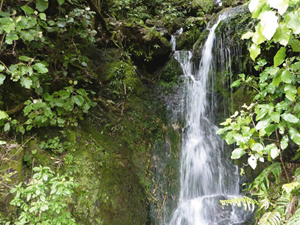
Although it often suffers from comparisons with its southern companion, the North Island is a pretty damn great motorcycle destination in its own right. Like all of New Zealand it seems to be several different places at once.
This is generalising in a really major way, but if I started to go into details I’d never stop. Let’s divide the island into four motorcycling segments and look at them in turn. You can assume that all the characteristics I write about occur in all four segments (and elsewhere), it’s just that the loading is different — and I’m concentrating on the main features.
North of Auckland is open countryside, much of it flat but still offering many rolling hills with lots of dairying. Scenic attractions, like the Bay of Islands and North Cape, are mainly on the coast but most of the roads run (at least a little way) inland. You can’t really go wrong if you take any road up here purely for the joy of riding, but don’t expect too many other interesting things to come up. And watch out for cowshit on the road…
Southeast of Auckland you can follow the shoreline of Tamaki Strait around to the Firth of Thames and then the Coromandel Peninsula. This is quite wild country, with terrific roads and lots to see. On the east coast you’ll find good accommodation and little cafés providing good food in places like Whangamata, but even the regional “capital” Thames has picked up enormously recently and offers both as well. The peninsula is a treasury of flora and fauna, and the Firth is an internationally listed wetland.
Further south is the volcanic and geothermal area around Rotorua and Taupo. This is a pretty rugged area so the roads are quite up-and-down and there are many hot pools and other thermal attractions. Because it is a tourist spot the traffic can be a hassle, especially since many drivers will be sightseeing. At the southern end is the so-called “Desert Road” to Waioru, a bit of a legend among NZ riders but a definite anticlimax for Australians.
If you’re staying in Rotorua, try to find a motel or hotel with its own thermal pool. It’s very relaxing at the end of a day’s riding, a bit like a spa or hot tub, but for some reason even more so.
North of Wellington is good value, too, although there aren’t actually a lot of interesting bike-type roads. The Southwards Car Museum at Paraparaumu is worth a visit. There aren’t many bikes, but some of them are quite unusual. Some of the cars are truly amazing, too. We like to take the Akatarawa Road up there, from Upper Hutt, rather than the coast road. That way you can take the equally enjoyable Paekarariki Road back to Wellington. The ferries for the South Island leave from Wellington.
What would we do: Something we’ve never done. Despite many trips across the Tasman, there is one entire section of the North Island none of us has ever visited, and that’s East Cape. Now mind you, the list of attractions is somewhat slim out there: Whanarua Bay has a macadamia farm, the Maori canoes landed at Whangaparoa in 1350, there’s horse riding at Hicks Bay and an historic church at Tikitiki and that’s pretty much it. But we would expect the road, as described in Peter Mitchell’s New Zealand Motorcycle Atlas from Hema Maps, to be quite exciting.
“Motorcyclists are provided with a seemingly endless variety of bays and beautiful beaches, accompanied by thrilling corner carving,” Peter writes. And of course the very remoteness of the 323km road from Opotiki to Gisborne makes it attractive.
No idea where we’d stay; as I mentioned, we’ve never been there. But we’d like to try it.
South Island
Where do I start? Well, probably the best place is Picton, the place where the interisland ferries will drop you off if you’re coming from the North Island. We’ll take it from there.
Turn right off the ferry and head for Queen Charlotte Drive. This is a wonderful and reasonably quiet bit of road that takes you across to Highway 6 near Havelock. Fill up before you go, though, because last time I rode it I didn’t see any fuel anywhere along there.
This will take you to Nelson, where there is a wonderful road south to Saint Arnaud. You can take that or you can bear right at Belgrove to take the road to Kawatiri. Either way, you’ll find yourself heading for Murchison and the wonderful Buller Gorge Road beyond, on the way to Westport. This is great riding, but there’s better to come: stay on Highway 6 going south and you will ride the best bike road in New Zealand on your way to Greymouth.
Hmm, this is getting a bit too detailed for what is meant to be a general article!
Never mind. Just continue south, following the coast and sampling some truly wonderful riding before you come to Haast and turn left. Haast Pass is not an especially rugged sort of pass, not like Arthurs or Lewis Pass to the north, but it’s still a lot of fun. The road leaves you at the top of Lake Wanaka, in scenery that must have been photographed and filmed for bike and car ads more often than just about anywhere else in the world.
Drive from Wanaka to Queenstown along the Crown Range Road, the less exciting run to Te Anau and then the truly wondrous run out to Milford Sound … naturally you’ll want to stop at Invercargill and take a photo of your mates on the World’s Fastest Indian! Follow the coast north (it’s all sealed, despite what some maps say) to Dunedin and the World’s Steepest Street.
Warning: the road from here to Christchurch is possibly the only dull route on the entire South Island, but then you have the run out to Akaroa and, if you have time, a big loop of Arthurs and Lewis passes before you’re back on the east coast. It’s a good run north along the steep cliffs, and at Blenheim the wonderful WWI aircraft museum awaits you.
You will limp into Picton for the return journey with your eyes still like dinner plates and your heart rate twice normal, I guarantee it. And that’s just from the way they fix the roads by cutting out rectangles of tar and dumping gravel instead…
No, seriously, if you get the opportunity, go ride the South Island. You can, of course, rent a bike in Christchurch or Nelson and start and finish there, and Get Routed will ship your bike to Christchurch.
What would we do: Exactly what I’ve described above. That circuit is irresistible, and the great thing is that you can take as many days as you like to ride it. If you were in a hurry (a crazy thing to be on this kind of trip) you could — just — do it justice in a week. I’d suggest that two weeks would be more like it, and counting.
It is not difficult to find somewhere to stay in the South Island, partly because it is so popular with tourists, both local and international. It’s true that many of them — sometimes it seems like thousands — do their travelling in campervans, but there are still plenty of b&bs and motels. Kiwi motels tend to be very well equipped, even featuring full kitchens.
How do I go?
There are five ways to go touring on a motorcycle. And no, I don’t mean sitting down, standing up, err … from the pillion seat … ah … no. I don’t mean any of these things.
I mean you can ride your own bike; ship your bike to your destination; rent a bike there; buy a bike there; go on a self-guided tour; or go on a fully organised tour
We’ve covered all of these before, complete with advantages and disadvantages, including a very useful article recently by Bob Rosenthal about buying a bike overseas and then leaving it there, ready for you whenever you decide to pop over and go for a ride. We’ve also covered the nitty gritty, like paperwork, how and what to pack and so on.
There is a detailed analysis of these various options at the end of the first Destinations story in ARR #70.
